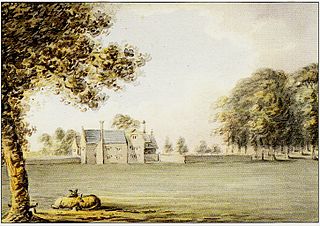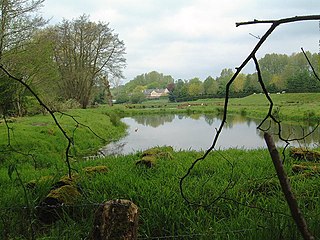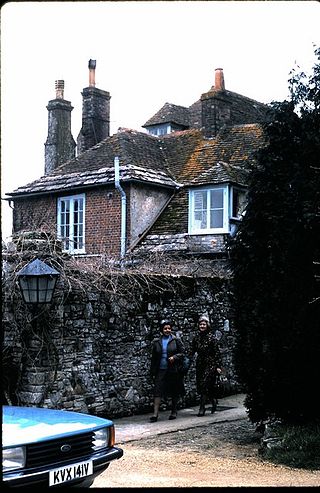Related Research Articles

Plympton is a suburb of the city of Plymouth in Devon, England. It is in origin an ancient stannary town. It was an important trading centre for locally mined tin, and a seaport before the River Plym silted up and trade moved down river to Plymouth and was the seat of Plympton Priory the most significant local landholder for many centuries.

Woodspring Priory is a former Augustinian priory. It is near the scenic limestone promontory of Sand Point and Middle Hope, owned by the National Trust, beside the Severn Estuary about 3 miles (5 km) north-east of Weston-super-Mare, within the English unitary authority of North Somerset. Many of the buildings are Grade I listed, and the whole site is scheduled as an ancient monument.

The Priory Church of St James, Bristol, is a Grade I listed building in Horsefair, Whitson Street.

Tedburn St Mary is a village and civil parish in the Teignbridge district of Devon, England, approximately 8 miles west of Exeter. It has a population of approximately 1500. The village is the principal population centre of the electoral ward called Teignbridge North. The population of the ward at the 2011 census is 2,715.

St Veep is a civil parish in Cornwall, England, United Kingdom, situated above the east bank of the River Fowey about three miles (5 km) south-east of Lostwithiel. It is bordered by the parishes of St Winnow to the north-west, Boconnoc to the north, Lanreath to the east Polperro to the south-east and Lanteglos to the south. The River Fowey forms its western boundary. The parish is named after Saint Veep of whom little is known.


Cockersand Abbey is a former abbey and former civil parish near Cockerham in the City of Lancaster district of Lancashire, England. It is situated near the mouth of the River Cocker.


Cowick is a suburb of the City of Exeter in Devon. Historically it was a manor situated in the parish of St Thomas, Exeter, within the hundred of Wonford. It was formerly the site of a Benedictine monastery.

Various monasteries and other religious houses have existed at various times during the Middle Ages in the city of Exeter, Devon, England.
Polsloe Priory, also known as St Katherine's Priory, was a Benedictine priory for women in Devon, England. It was founded in around 1159 on land to the east of Exeter, on a site that is now part of the city's suburb of Polsloe. At the time it was the only religious house for women in Devon, but two others were founded later: at Cornworthy and Canonsleigh Abbey. The first prioress of whom any record survives was Avelina in 1218. Amongst the holdings of the priory was the Church of St Mary, Marston Magna in Somerset.

St James Priory, Exeter was a priory in Devon, England.

Kerswell Priory was a small Cluniac priory in the parish of Broadhembury in Devon, England.

Wareham Priory was a monastery in Wareham, Dorset, England.

Wilmington Priory was a Benedictine priory in the civil parish of Long Man, East Sussex, England. The surviving building is now owned by the Landmark Trust and let as holiday accommodation. It is both a Grade I listed building and a scheduled monument.

Bullington Priory was a priory in Bullington, Lincolnshire, England.

Deeping St James Priory was a priory in Deeping St James, Lincolnshire, England. It was a dependency of Thorney Abbey.
References
- ↑ field investigator's comment, cited by Historic England Research Records
- ↑ Historic England Research Records: Marsh Barton Priory Cell
- ↑ Exeter Memories: St Mary de Marisco